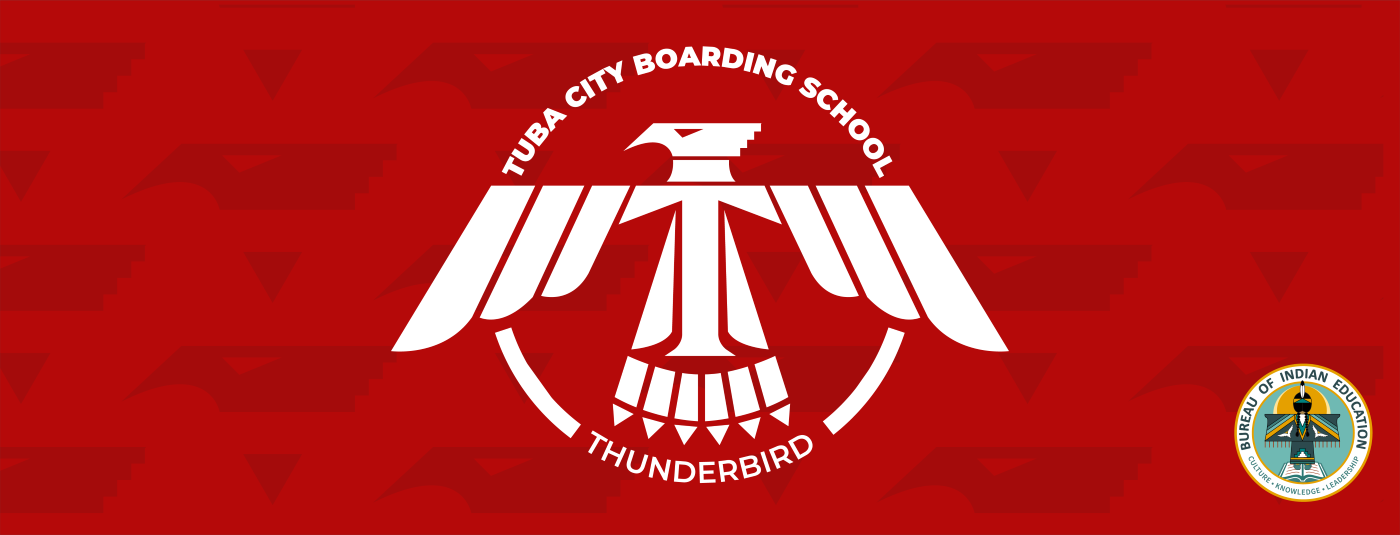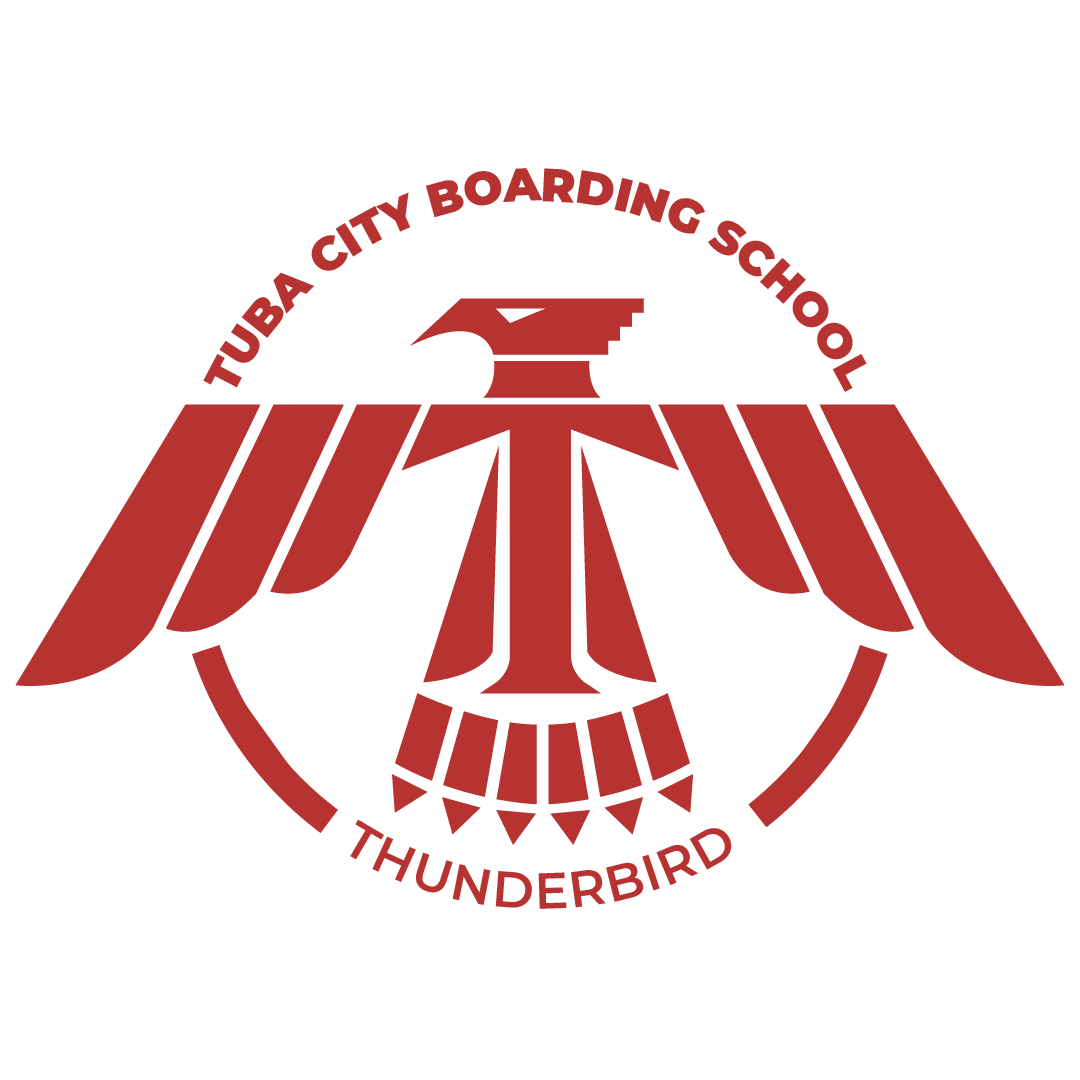Our History

Early Days of Tuba City Boarding School
Tuba City Boarding School’s first location was in Blue Canyon, Arizona, approximately 25 miles southeast of Tuba City, and called the Blue Canyon School. Established in 1898 under the authority of the Bureau of Indian Affairs, the school’s initial purpose was to educate Native American youth from northern Arizona.
In 1901, recognizing the need for a more accessible site, the school was relocated to its current location in Tuba City. This move was part of a more significant effort to centralize and improve the facilities. In 1940, Tuba City Boarding School was established, and management transitioned from the Department of the Army to the Department of the Interior, marking a significant shift in oversight and priorities. Tuba City Boarding School continued as a major boarding school institution on the Western Navajo Reservation. This growth reflected important changes in the school curriculum.
Mr. John Sloan, a Navajo employee of the Western Navajo Agency, was one of the first students to graduate from Tuba City Boarding School in 1941. The educational opportunities at Tuba City Boarding School made it possible for Sloan and several classmates to serve in the armed forces during World War II. Because of World War II, Navajo traditional life was permanently changed. When Navajo veterans like Mr. Sloan returned from the war, they encouraged their families to attend school.
Sloan said the war made Navajos think differently about education:
"Navajos, for the most part, were unprepared for the sudden changes the war brought. They began to realize as never before that their own lack of education, their inability to use the English language, and their unfamiliarity with a wage economy handicapped them in the employment market. Navajos in the military service felt their deficiencies were a great drawback to their advancement. More and more Navajos began to think seriously about the relationship of education to their future, especially the future of their children."
In 1946, the Bureau of Indian Affairs employed Dr. George I. Sanchez to survey the reservation education system and report his findings. His findings were that two-thirds of the Navajo population had no education, and to provide education for three-fourths of the Navajo population, a school construction program costing $90,000,000 would be needed. Public schools on the reservation were built, and cooperative programs for the education of Navajo students were implemented under the Johnson O'Malley Act of 1934. This approach became the norm for Navajo education throughout the 1960s and 1970s.
A new boarding school facility was built in Tuba City, closing the old boarding school in 1971. This made a significant contribution to the educational history of the Western Navajo Reservation. The early campus structures, including Tuba Hall, Manuelito Hall and Castlerock Hall, were built in the Neoclassical Revival style—a reflection of the BIA’s architectural standards of the time.
Tuba Hall was named after the Hopi Chief Tuba, who in 1875 granted the Mormons a settlement site in exchange for farming tools and supplies. Manuelito Hall was named after the great Navajo Chief Manuelito, who helped negotiate the Navajo Treaty of 1868, establishing the first Navajo Reservation. The origin of the name Castlerock Hall is unclear.
The Learning Environment: A Culture of Innovation and Growth
Over the years, Tuba City Boarding School has continually evolved to meet the educational needs of its students. TCBS’s commitment to a 1-to-1 Chromebook program is a testament to its dedication to preparing students for a technology-driven world. Students use these devices for reading and math assessments, research and engaging with the Bureau of Indian Education’s eLearning Management System to enhance classroom learning.
The curriculum at TCBS has been adapted to align with the BIE’s Navajo District essential standards, moving away from teacher-selected Common Core standards to a more culturally relevant framework. Teachers and staff, many of whom have lived in Tuba City for a lifetime, are committed to professional development and lifelong learning, ensuring they remain at the forefront of educational best practices.
Cultural integration is a cornerstone of the TCBS experience. Students receive Navajo language instruction throughout the school year, fostering a deep connection to their heritage. Cultural celebrations, such as Native American Heritage Month and other special events, are pivotal in honoring and preserving the rich traditions of the Navajo people.
Tuba City’s Navajo Community
Tuba City, or Tó Naneesdizí (“Tangled Water” in Navajo), is a vibrant community steeped in history and tradition. The area’s springs have historically supported both Hopi and Navajo settlements in the Navajo Nation. These springs have been a vital resource for centuries, drawing people and wildlife alike.
The Navajo people in this region have a long-standing tradition of resilience and adaptability. Their cultural practices, rooted in harmony and balance, are reflected in the daily lives of Tuba City Boarding School students and their families. This connection to land and culture is an invaluable educational resource, enriching the school’s curriculum and fostering a sense of identity and pride among students.
Community involvement is integral to the school’s success. Parents, elders and local leaders actively participate in school events and decisions, ensuring the education provided is relevant and impactful. This partnership between the school and the community creates a supportive environment encouraging academic achievement and cultural preservation.
Building Bridges: Connections with Other Tribes and Communities
While Tuba City Boarding School primarily serves the Navajo Nation, its influence and connections extend to other tribes and communities. The school’s history of collaboration is rooted in its mission to provide a comprehensive education that respects and incorporates diverse Indigenous perspectives.
TCBS serves students from communities within a 60-mile radius of Tuba City. Nearby schools and tribal organizations observe TCBS best practices in classroom instruction and professional learning team meetings. These partnerships enhance the quality of education at TCBS and strengthen relationships across tribal and educational boundaries.
Moreover, TCBS’s commitment to fostering intertribal relationships is evident in its outreach efforts and cultural exchanges. Events celebrating Indigenous heritage often include representatives from neighboring tribes, creating opportunities for students to learn about and appreciate the rich tapestry of Native American cultures.
A Legacy of Resilience and Progress
Tuba City Boarding School stands as a testament to the enduring spirit of the Navajo people and the power of education to transform lives. From its humble beginnings in Blue Canyon to its enhanced dormitories, upgraded facilities and new football field in Tuba City, the school has continually adapted to meet the needs of its students and community. As it looks to the future, Tuba City Boarding School remains committed to preserving its cultural heritage while embracing innovation and excellence in education.
Source:
https://tile.loc.gov/storage-services/master/pnp/habshaer/az/az0200/az0237/data/az0237data.pdf



